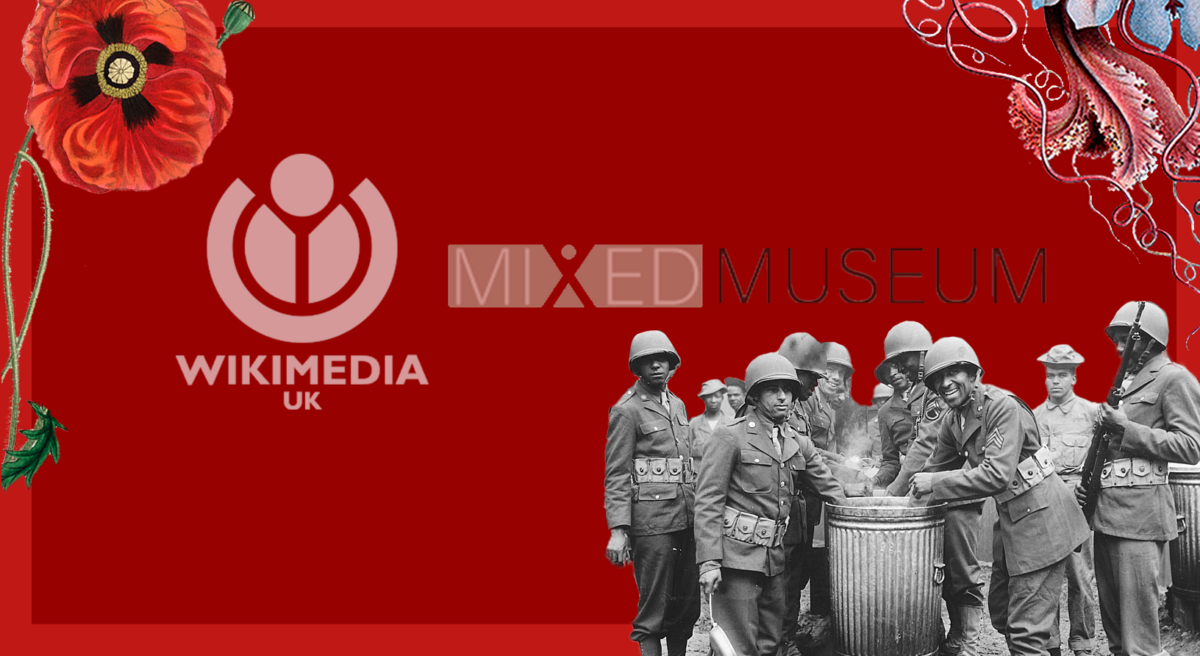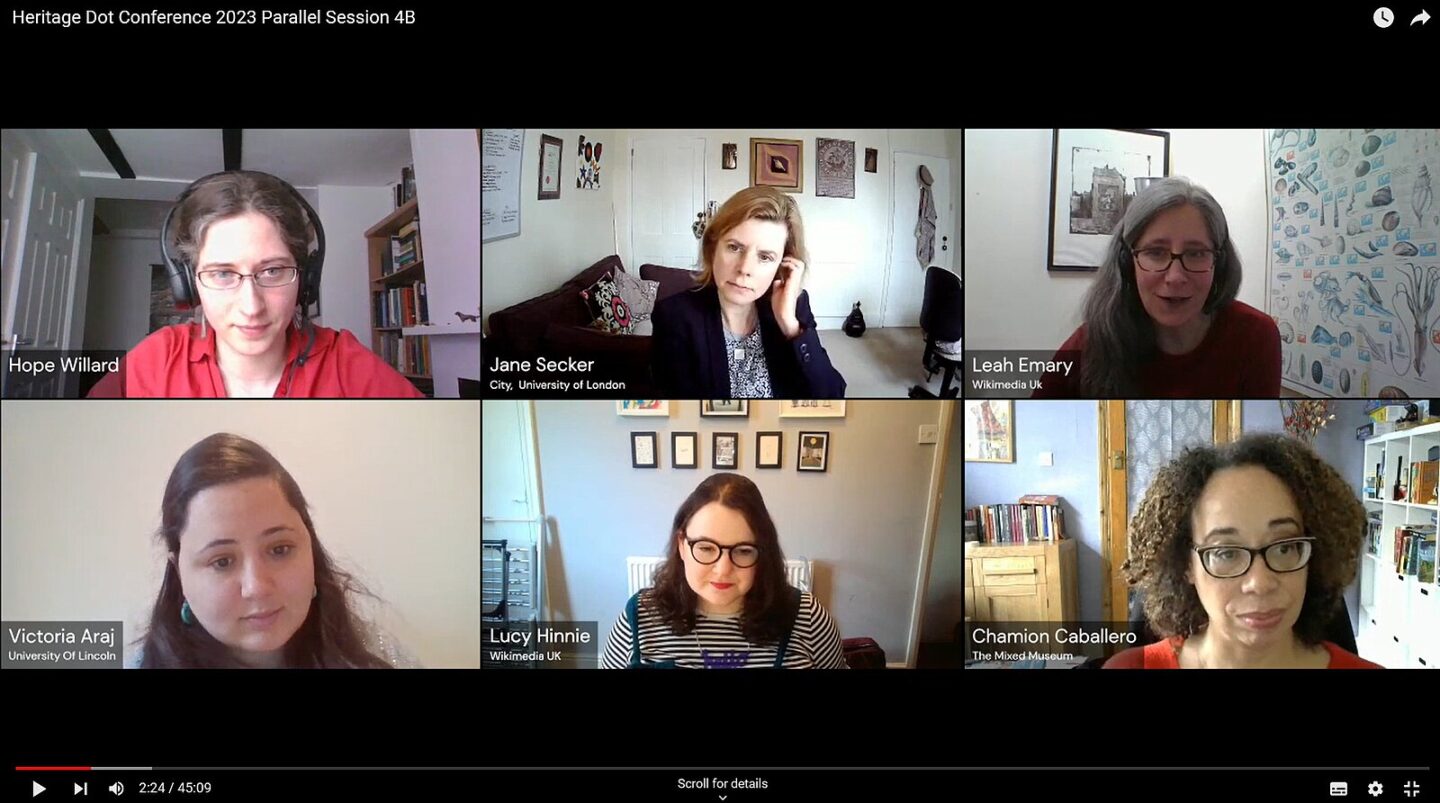Celebrating The Mixed Museum residency as it comes to an end


By Leah Emary, Wikimedian in Residence at The Mixed Museum and Connected Heritage Project Lead
The Wikimedian in Residence partnership continued at the Mixed Museum from January to March 2023, building on the initial stage of the residency that began in September. This blog posting describes the initiatives focussed on during this time and next steps that both the Mixed Museum and Wikimedia UK might like to take to build on the residency. The End of Residency Report can be found here.
Sustainable digital volunteer programme for the Mixed Museum
As described in the first report from the residency, editing Wikimedia projects is an ideal basis for a digital volunteering programme for the Museum. However, after the scope and scale of recruiting for and managing a volunteer programme became clear, it seemed desirable to fund a volunteer coordinator for the Museum who could deliver this with expertise and focus, rather than making it part of Chamion’s work.
I outlined what would be required to create a sustainable virtual volunteering programme for the Mixed Museum, with the hopes that this could be used for a future funding bid. You can read the proposal here: Sustainable digital volunteer programme for the Mixed Museum.
We had initially planned to create a bespoke, self-study training programme for volunteers based on a set of Google slides and embedded videos taken from Zoom-based training. Because the editing interface of Wikipedia changed quite dramatically in January 2023, the training videos and screenshots were quickly out of date and less suitable for self study, which altered our plans.
Rather than re-record, we took time to consider the implications of future changes to the interfaces making self study videos obsolete, and the considerable investment they take to remain up to date and useful. As the museum doesn’t have anyone to do that ongoing maintenance work, the bespoke training programme would quickly go out of date. We decided to rely on three existing resources for online training (Training Library [Programs & Events Dashboard], The Wikipedia Adventure, and The Introduction to Wikipedia) for a more sustainable future. For more information on which training we decided on and how to contextualise it, see the Sustainable digital volunteer programme for the Mixed Museum document.
Heritage Dot 2.0 Roundtable

In March 2023, Chamion participated in a roundtable discussion moderated by the Connected Heritage team and two other Connected Heritage partners, Dr Jane Secker and Dr Victoria Araj, as part of the Heritage Dot 2.0 conference hosted by the University of Lincoln.
The discussion touched on how engagement with Wiki-based projects enabled these three cultural heritage organisations to improve the accessibility of their collections, while simultaneously empowering volunteers and members through embedded digital upskilling. The Mixed Museum’s Wikipedia edits were discussed as an example of ways that open knowledge can place overlooked cultural histories into the dominant narrative. Chamion also described the legacy the Residency will have on the Museum’s future projects.
We were honoured to hear Josie Fraser from the National Lottery Heritage Fund mention the roundtable as a highlight of the conference during her closing remarks.
Queen Mary University London Microinterns 2023
Two student interns, Leyi and Shannon, joined the Mixed Museum for four weeks in March 2023. The internship followed a similar model to one we ran last year. More about the micro-internship format is in this blog posting March is Wiki micro-internship month at The Mixed Museum and Manar al-Athar.
This year, the interns worked from a Trello board of Wiki tasks. Both Leyi and Shannon focussed on the military history of African American soldiers based in the United Kingdom during and after World War 2. While Shannon focussed on adding personal accounts to articles which read like lists of list of dates, Leyi was interested in adding social history to articles on military bases in England. Leyi experienced some pushback from other editors which she describes in her blog-based reflection [link here] and was resilient in the face of it. The interns had interesting conversations with Chamion around who feels ownership over different parts of history and how our work editing Wikipedia can have an impact on what is generally accepted as ‘important’.
What Chamion and I discovered, having run this internship twice now is that, though the platform is the same and the work is similar each year, Wikipedia editing is like a mirror in that each person sees something different reflected back at them in the process. See the Internship Dashboard for 2023.
Museum Ethnographers Group Conference 2023
The work we did at the Residency around copyright and Wikimedia Commons (highlighted here) was the subject of a paper delivered to the Museum Ethnographers Conference in Cambridge in April 2023. Slides for Museum Ethnographers Group Conference presentation.
In the presentation, the example of the Brown Babies images sits alongside work done by Martin Poulter at the Khalli Collections and Lucy Moore’s recuperative work to enhance the representation of museums in Oceania on Wikimedia projects. The three projects engage in a conversation about what it is to edit Wiki in today’s context and how we can work together to best surmount these and create a more equitable digital space for open knowledge.
Looking at visitor numbers to The Mixed Museum
Chamion has long been interested in what the Museum’s Google analytics tell her about the numbers of visitors clicking through from Wikipedia links to The Mixed Museum. These so-called referral links make up a small but significant portion of the Museum’s audience. In the period before the Connected Heritage partnership, the Museum had very little traffic from Wiki sources. In fact, it was listed seventh of the referral channels, with 25 visitors coming directly from Wiki links. The top referral site then was a National Archives blog post, with 117 visitors. Since March 2022, National Archives referral rate has stayed relatively steady while the Wiki channel link has seen a percentage increase of 1584!
What is also interesting is that those who reach the Museum via Wiki sources are spending an average of 3.44 minutes on the site, compared to before the Connected Heritage partnership when they visited for an average of 1.27 minutes. Clearly, through more sustained and targeted editing, we have not only attracted more Wiki users to The Mixed Museum, but increased the engagement of these visitors with the exhibitions.

We can also see all the pages which reference the Mixed Museum by using the MassViews Analysis tool.
Though Leah’s Residency is coming to an end, the relationship between the Museum and Wikimedia UK will go on. Chamion will be contributing her insight and knowledge to a new research project dedicated to understanding the barriers that small and medium sized heritage organisations face when contributing to open knowledge. We hope to run the microinternships again in March 2024 and ideas for pursuing the digital volunteering programme are in the works.
If you are involved with a heritage or cultural organisation in the United Kingdom and you think a Wikimedian in Residence might be good for your organisation, please talk to us about it. You can book a half hour meeting with the Connected Heritage team via Calendly or drop us an email.